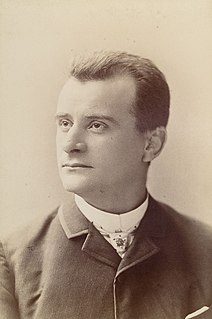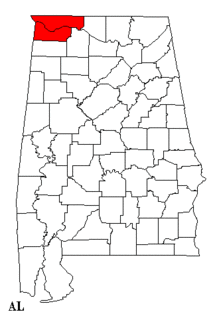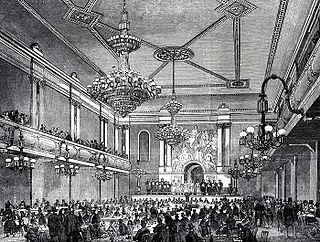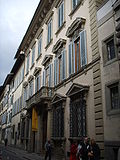
Chess is a musical with music by Benny Andersson and Björn Ulvaeus of the pop group ABBA, lyrics by Ulvaeus and Tim Rice, and a book by Rice. The story involves a politically driven, Cold War–era chess tournament between two grandmasters, one American and the other Soviet Russian, and their fight over a woman who manages one and falls in love with the other. Although the protagonists were not intended to represent any real individuals, the character of the American grandmaster was loosely based on Bobby Fischer, while elements of the story may have been inspired by the chess careers of Russian grandmasters Viktor Korchnoi and Anatoly Karpov.

The intermedio[interˈmɛːdjo], in the Italian Renaissance, was a theatrical performance or spectacle with music and often dance, which was performed between the acts of a play to celebrate special occasions in Italian courts. It was one of the important predecessors to opera, and an influence on other forms like the English court masque. Weddings in ruling families and similar state occasions were the usual occasion for the most lavish intermedi, in cities such as Florence and Ferrara. Some of the best documentation of intermedi comes from weddings of the House of Medici, in particular the 1589 Medici wedding, which featured what was undoubtedly both the most spectacular set of intermedi, and the best known, thanks to no fewer than 18 contemporary published festival books and sets of prints that were financed by the Grand Duke.

Judy Kuhn is an American actress and singer, known for her work in musical theatre. A four-time Tony Award nominee, she has released four studio albums and sang the title role in the 1995 film Pocahontas, including her rendition of the song "Colors of the Wind", which won its composers the Academy Award for Best Original Song.

Edward Harrigan, sometimes called Ned Harrigan, was an Irish-American actor, singer, dancer, playwright, lyricist and theater producer who, together with Tony Hart, formed one of the most celebrated theatrical partnerships of the 19th century. His career began in minstrelsy and variety but progressed to the production of multi-act plays full of singing, dancing and physical comedy, making Harrigan one of the founding fathers of modern American musical theatre.
Chicago Musical College is a division of the Chicago College of Performing Arts at Roosevelt University.

The Usher Hall is a concert hall, situated on Lothian Road, in the west end of Edinburgh, Scotland. It has hosted concerts and events since its construction in 1914 and can hold approximately 2,200 people in its recently restored auditorium, which is well loved by performers due to its acoustics. The Hall is flanked by The Royal Lyceum Theatre on the right and The Traverse Theatre on the left. Historic Scotland has registered the Hall with Category A listed building status.

Sir Horace Edward Moss was a British theatre impresario and the founder chairman and joint managing director of the Moss Empires Ltd theatre combine which he created in 1899, and floated on the Stock Exchange, after first joining forces with Richard Thornton of Newcastle and later with Oswald Stoll then operating in Wales. From its start and during the 20th century Moss Empires remained the largest group of variety theatres in Britain, with over 50 venues at its height, and was regarded as the largest in the world. It was he who, in 1904, introduced a "four shows a day" system at some of his theatres; he was also the first to allow advance booking of seats in a music hall.

The Florence-Muscle Shoals Metropolitan Area, commonly known as The Shoals, is a metropolitan statistical area in northwestern Alabama including the cities of Florence, Muscle Shoals, Tuscumbia, and Sheffield, and the counties of Lauderdale and Colbert. The population is around 200,000 and an additional 410,000 commute to the Shoals daily for work, school, shopping, and more according to a recent Shoals publication called "Four Cities, Four Cultures". It has also been known as the Tri-Cities and the Quad-Cities by locals.

Donna Jean Thatcher Godchaux-MacKay is an American singer, best known for having been a member of the Grateful Dead from 1972 until 1979.

Downtown Toronto is the main central business district of Toronto, Ontario, Canada. Located entirely within the district of Old Toronto, it is approximately 17 square kilometres in area, bounded by Bloor Street to the northeast and Dupont Street to the northwest, Lake Ontario to the south, the Don Valley to the east, and Bathurst Street to the west. It is also the location of the municipal government of Toronto and the Government of Ontario.

Julia Emilie Neilson was an English actress best known for her numerous performances as Lady Blakeney in The Scarlet Pimpernel, for her roles in many tragedies and historical romances, and for her portrayal of Rosalind in a long-running production of As You Like It.

Sir Charles Blake Cochran, generally known as C. B. Cochran, was an English theatrical manager and impresario. He produced some of the most successful musical revues, musicals and plays of the 1920s and 1930s, becoming associated with Noël Coward and his works.
Billy Edward "Edd" Wheeler is an American songwriter, performer, writer, and visual artist.

Culture in North Omaha, Nebraska, the north end of Omaha, is defined by socioeconomic, racial, ethnic and political diversity among its residents. The neighborhood's culture is largely influenced by its predominantly African American community.
Weston's Music Hall was a music hall and theatre that opened on 16 November 1857 at 242-245 High Holborn in London, England. In 1906, the theatre became known as the Holborn Empire.

Faust up to Date is a musical burlesque with a score written by Meyer Lutz. The libretto was written by G. R. Sims and Henry Pettitt. It is a spoof of Gounod's opera, Faust, which had first been performed in London in 1864, and followed on from an earlier Lutz musical, Mephistopheles, or Faust and Marguerite.

The Olympia Theatre is a concert hall and theatre venue in Dublin, Ireland, located in Dame Street.

The Canterbury Music Hall was established in 1852 by Charles Morton on the site of a former skittle alley adjacent to the Canterbury Tavern at 143 Westminster Bridge Road, Lambeth. It was one of the first purpose-built music halls in London, and "probably the largest and grandest concert-room ever attached to a public house" in London. Morton came to be dubbed the Father of the Halls as hundreds of imitators were built within the next several years. The theatre was rebuilt three times, and the last theatre on the site was destroyed by bombing in 1942.

The Civic Center Music Hall is a performing arts center located in Oklahoma City, Oklahoma. It was constructed in 1937 as Municipal Auditorium and renamed in 1966. The facility includes the Thelma Gaylord Performing Arts Theatre, the Freede Little Theatre, CitySpace, the Meinders Hall of Mirrors and the Joel Levine Rehearsal Hall.

The Capitol Theatre is the largest theatre in West Virginia and a landmark building in the national historic district of downtown Wheeling. For many years, it has served as the home of Jamboree USA and the Wheeling Symphony Orchestra. Jamboree USA, a Saturday night live country music show broadcast on WWVA 1170 AM from 1926 until 2007, was the second-longest running radio show in the United States, second only to the Grand Ole Opry. The live music show annually drew hundreds of thousands of country music fans to Wheeling, where both local acts and nationally known celebrities such as Johnny Cash, Loretta Lynn, Merle Haggard and Charley Pride would perform.






















































